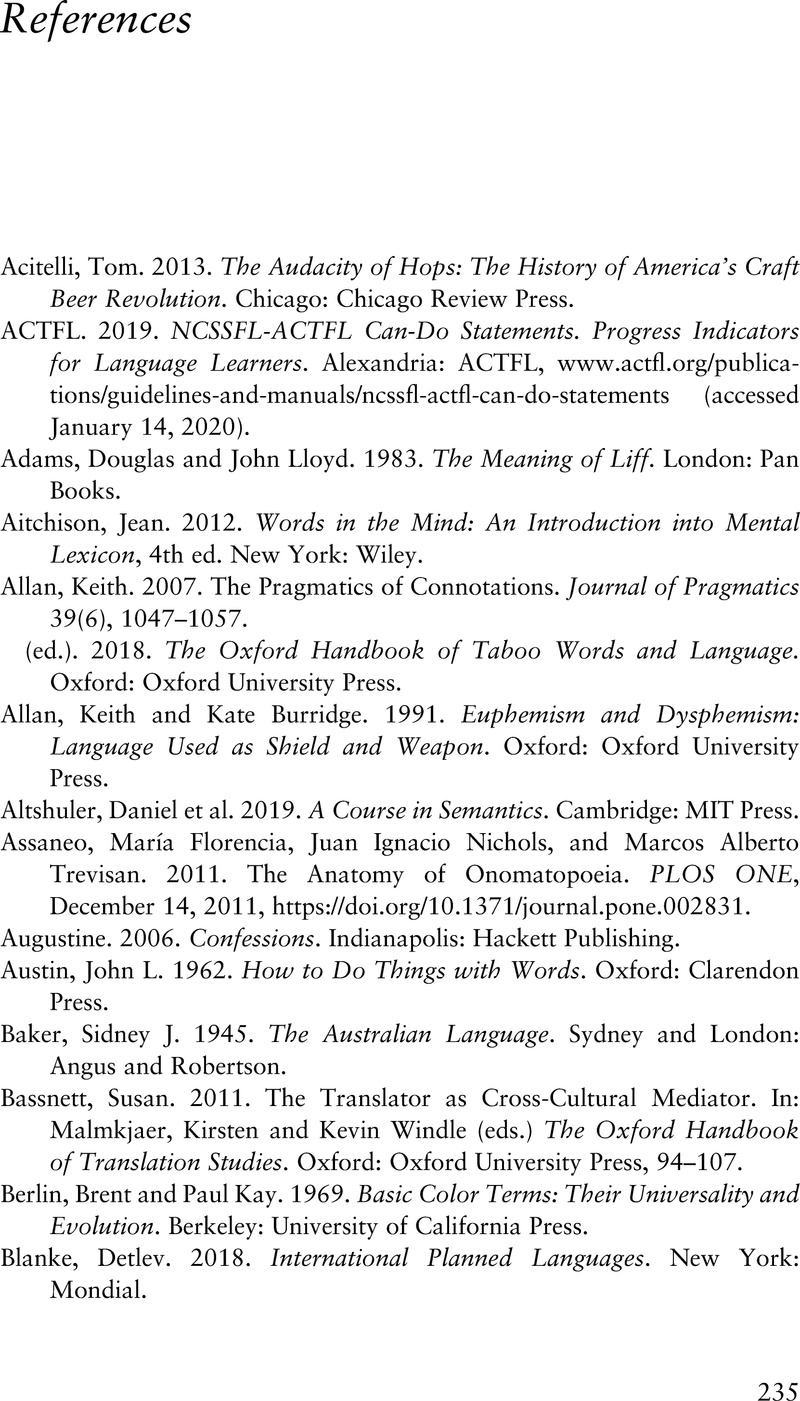Book contents
- The Geography of Words
- The Geography of Words
- Copyright page
- Contents
- Figures
- Acknowledgments
- Introduction
- Part I How Words Are Studied
- Part II How Words Are Carved Out
- Part III How Things Are Done with Words
- Part IV How Words Are Born
- Part V Where Words Live
- Part VI A Word After
- Part VII Words about Words
- References
- Index of Languages
- Person and Subject Index
- References
References
Published online by Cambridge University Press: 25 November 2021
- The Geography of Words
- The Geography of Words
- Copyright page
- Contents
- Figures
- Acknowledgments
- Introduction
- Part I How Words Are Studied
- Part II How Words Are Carved Out
- Part III How Things Are Done with Words
- Part IV How Words Are Born
- Part V Where Words Live
- Part VI A Word After
- Part VII Words about Words
- References
- Index of Languages
- Person and Subject Index
- References
Summary

- Type
- Chapter
- Information
- The Geography of WordsVocabulary and Meaning in the World's Languages, pp. 235 - 244Publisher: Cambridge University PressPrint publication year: 2021

